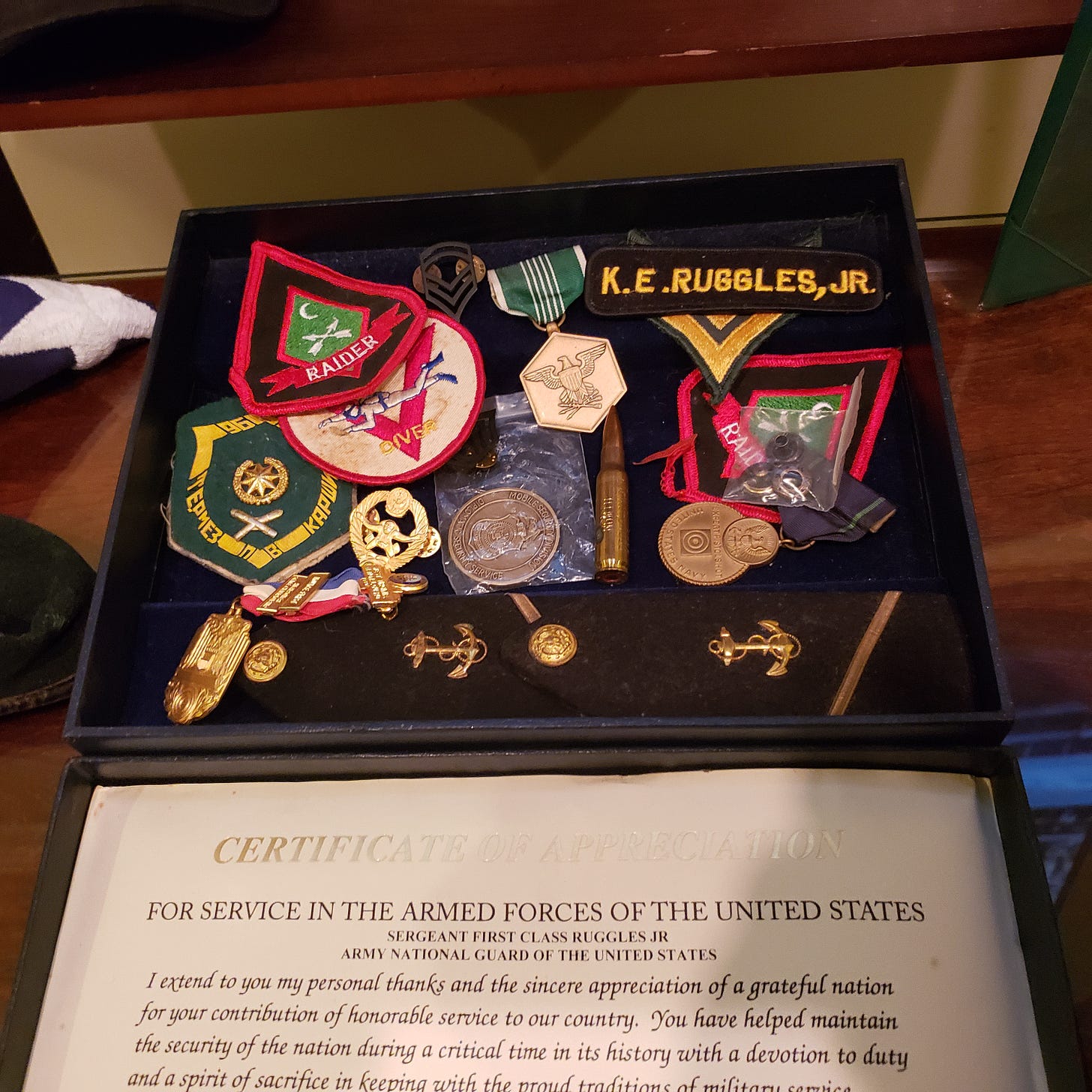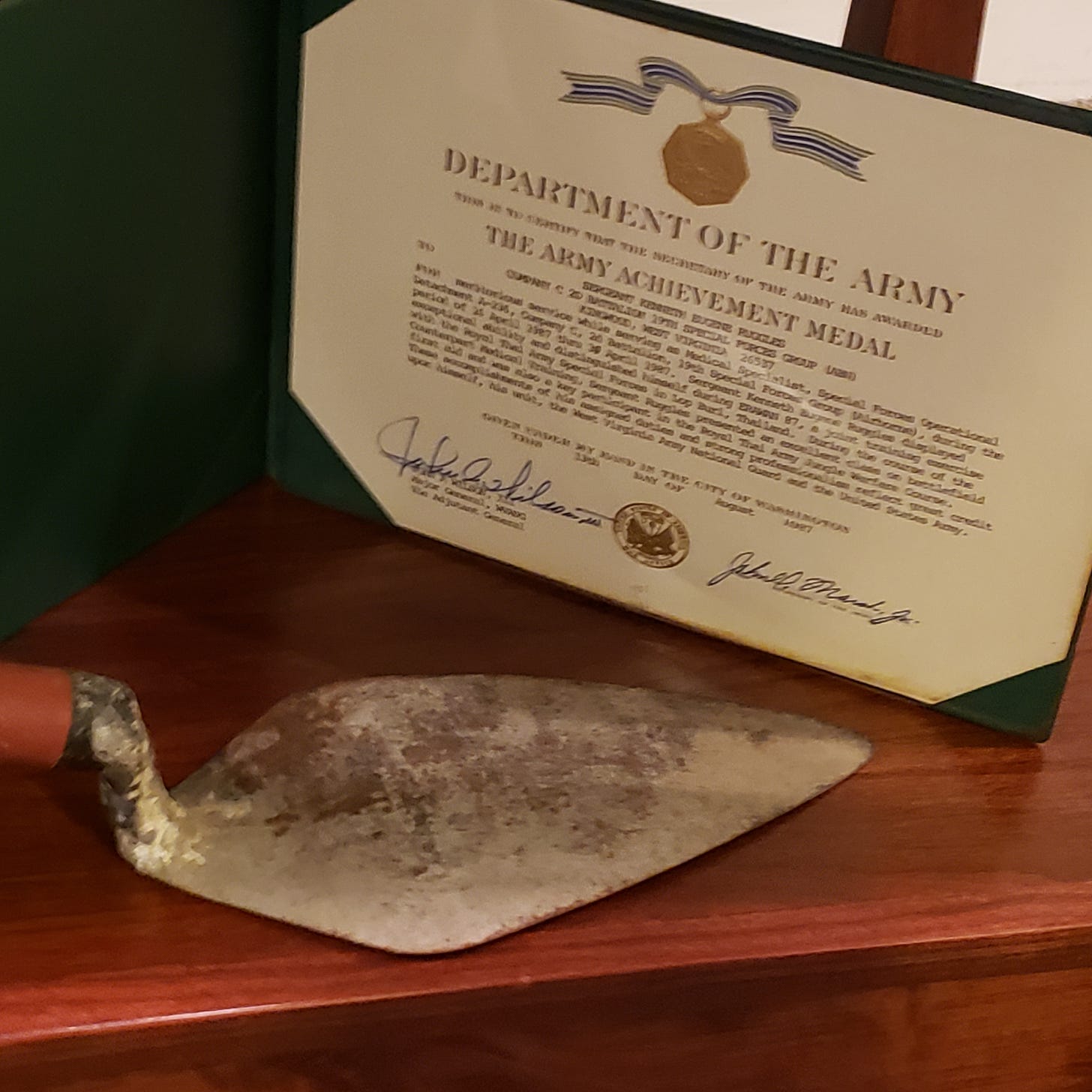Civil defense grew out of the United States military and has always depended on service members with a skill stack they developed in the service to protect property and save lives from natural and manmade disasters.
As an advisor to the National Museum of Civil Defense, I am well aware that the sacrifice and skills of the American military members are vital to American tactical civil defense.
Because our military is disintegrating American Tactical Civil Defense will deteriorate along with it. Our military is only as good as our country, and our civil defense is only as good as our military, and, sadly, our country has not been good of late.
With millions of millions of military-age men pouring across the Southern border of the United States and then being transported to major American cities and the heartland and being given billions in assistance when tens of thousands of Vets are homeless and slowly dying, every compassionate, aware, intelligent, and devoted American Veteran knows something is seriously wrong.
We have depleted our military stockpiles, weapons, equipment, and logistical support on a useless war defending a corrupt nation’s borders when we do not defend our own border anymore. How did we come to this?
Now that Russia has won that war, the consequences for our position among nations worldwide is dire as BRIX will take its revenge on the American Empire. If we are not to be slaves of our enemies, especially the Communist Chines Party (CCP), we must act fast.
When America’s elite military academies are more interested in teaching Marxist/Leninist theory and practice disguised as “DEI,” “CRT,” and “ESG,” rather than military war tactics, techniques, policies, procedures, and history, something is seriously wrong.
When thousands of the best USAF pilots, Navy SEALS, Marine MARCOM, and Army Green Beret’s left the service rather than get the deadly, illegal, and un-Constitutional biological weapon injected into their Temple of the Holy Spirit, something is seriously wrong.
And with the CCP enjoying a 50 to 1 cyberwarrior advantage over the United States, how long before they choose to use that advantage to take us down? Consider also they are smart enough to partner a Hong Kong cyber criminal with a People’s Liberation Army (PLA) officer to combine the street cunning and the military discipline in a force multiplier. This is one of the main reasons they are able to crawl all over our commercial, military, government, medical, financial, transportation, and other data centers to download whatever digital information they can accumulate for when they conduct a cyberattack on us.
I could go on with the myriad somethings that are seriously wrong with the American military right now, but choose to move on from “how did we get here” to “what can be done to fix the sorry state of the American military?”
You can research many others who have covered the “how did we get here” part, so I will offer ideas about what can be done to fix the current cluster#### so life and a future for our children and grand children in the great American Republic Experiment is not only possible, but probable.
To take one example, the capabilities of drones have surpassed the capability of human piloted fighter jets to compete, as pointed out so masterfully by Elon Musk to USAF general Thompson at the Air Force Association in 2020 when he said, “The fighter jet era has passed…it’s drones.”
This is one of hundreds of thousands of tasks the new American Administration must begin to fix in 2025 in the American military.
Obviously, the senior military leaders who have been so incompetent and useless recently must be put out to pasture and replaced with better, more skilled younger leaders.
One of the best place to begin to see how to fix it is to be found in the company Anduril’s policy piece, Rebooting the Arsenal of Democracy. NOTE: The full Rebooting the Arsenal of Democracy policy paper can be found here.
Anduril is at the tip of the spear creating innovative integrated software and hardware to keep Americans safe. Below are a few paragraphs from their website that explain how unique they are and how important to our national security. Anduril, SpaceX, Starlink, and other great American companies are the way out of the current chaos. Currently, the Executive Branch and it’s minions are sabotaging such innovative companies. The next Administration must enable their innovation.
"Despite spending more money than ever on defense, our military technology stays the same. There is more AI in a Tesla than in any U.S. military vehicle: better computer vision in your Snapchat app than in any system the Department of Defense Owns; and until 2019, the United States' nuclear arsenal operated off floppy disks."
As war rages in Europe, citizens of the world’s democracies would be forgiven for wondering what went wrong.
Just about three decades ago, the Soviet Union fell, and some proclaimed an “end of history.” Former Soviet states appeared to be on the path to liberalization. The Chinese Communist Party would, with economic growth and globalization, become a responsible stakeholder of world order — or so leaders assured us.
But things took a different direction. Today, the world’s leading democracies do not have the technology they need to deter revisionist powers that, as Russia has shown, are willing to launch major wars to achieve their aims.
BECOME A MEMBER
America’s defense industrial base, which once produced technology straight out of science fiction, all but stopped innovating. China and Russia aggressively modernized their armed forces, building weapons specifically designed to neutralize America’s. The results are sobering: Today, in U.S. Defense Department wargames that model conflicts with China, China wins.
Only superior military technology can credibly deter war — but our defense companies are losing the ability to build it. In decades past, the West’s greatest scientific minds dedicated their careers to national security. John von Neumann, Alan Turing, and Kelly Johnson worked on cutting-edge science and engineering in the national interest. War research and development turned futuristic dreams into household staples: personal computing, GPS, the Internet, commercial air travel, and much more.
Today, there is more AI in a Tesla than in any U.S. military vehicle and better computer vision in your Snapchat app than in any system the Department of Defense owns. Until 2019, America’s nuclear arsenal operated off of floppy disks.
How did it come to this? Starting in the 1960s and building steadily in the decades that followed, our defense industry and government leaders became more interested in process than progress. Unlike other industries, defense companies are not asked to innovate — they await painstaking specifications instructing them what to build. Defense firms are also reimbursed by taxpayers for every hour they work, well before they’ve built a working product. And if delivery schedules slip, what is the government to do? Cancel the contract, wasting billions of taxpayer dollars and potentially bankrupting the company in the process? Or salvage the program with even more money? The infamous city planner Robert Moses knew the answer: “Once you sink that first stake,” he said, “they’ll never make you pull it up.”
The result is a defense industry that spends a measly 1 to 4 percent of revenue on internal research and development, compared to 10 to 20 percent at major tech companies and 40 percent or higher at technology startups. Why innovate when you have no competition? The 10 largest defense companies account for upwards of 80 percent of the industry’s revenue. Nearly two-thirds of major weapons-systems contracts in the United States have just one bidder. Those who take on the defense giants must fight the bureaucracy tooth and claw. Both SpaceX and Palantir, arguably the only two defense-technology success stories in recent decades, had to sue their customers for a fair shot at winning large contracts.
It’s time to reboot the arsenal of democracy. My company Anduril is just one of a slew of new companies building technology for our warfighters based on a few simple principles.
Outpacing the Threat
In 2018, Under Secretary for Research and Engineering Mike Griffin noted that, on average, it takes the United States 16 years to deliver an idea to operational capability, compared to under seven years for China. In the Middle East, well-financed terrorist organizations and militias iterate monthly on their armed drones. Simply put, we need defense companies that are fast, that build off their own dime, and sell their products “off the shelf.”
Build to Mission, Not to Spec
Jeff Bezos, Steve Jobs, Elon Musk, and other great tech entrepreneurs had distinct images of the future and how their products would shape it — images independent of, and often directly contradicted by, the opinions of those around them. The next great defense companies will behave exactly like this — listening to customers, working closely, and then coming up with solutions of their own, without recourse to onerous program specifications.
Software First
Software is finally eating the battlefield, whether the defense industry likes it or not. Autonomous systems, networked weapons, cyberweapons, and more are enabled in part or in total by software — and new companies must build it. The prime contractors are used to slowly developing large, exquisite hardware systems like fighter jets. Software, by contrast, is developed by shipping a minimum viable product out the door as quickly as possible and seeing where it fails. The next generation of software-defined defense companies will respond rapidly and continuously to the performance of their products, to such an extent that deployment and iteration will be elements of the development process itself.
Controlling Defense Budgets
The biggest lie of the political debate surrounding defense spending is that we are stuck in a dichotomy between doing “more with more” or “less with less.” This is a false choice: The essence of technology is doing more with less. With unmanned systems performing the dull, dirty, dangerous jobs of defense work, companies privately funding research and development and cutting costs, and a swell of competitive new entrants into the defense industry, we can rejuvenate our military’s technology while saving taxpayers billions of dollars.
There is no secret government silo of advanced technology that will save us if war breaks out: You must build it. Whether you are an engineer looking for a higher purpose than building photo filters, a government leader who wants to make a difference, or an entrepreneur founding a company — if you have read this far, you care about the future of our collective defense. Help us to reboot the arsenal of democracy and make that future safe, prosperous, and free.
Call it a turning point, inflection point, historical moment, whatever, the year 2024 will be one of those years that determines not just a year or decade or century but a millennium. This is especially true for our broken military.
U.S. enters 2024 with its smallest military in over 80 years as active-duty troop numbers sink to less than 1.3 million and all branches (except Space Force) missed their recruiting goals.
In 2023, the U.S. military service branches faced significant recruitment shortfalls. The Army, Navy, and Air Force all missed their recruitment goals by substantial margins. Here are the numbers:
Army: The Army fell short of its goal by approximately 15,000 recruits.
Navy: The Navy missed its goal by around 8,000 recruits.
Air Force: The Air Force was short by approximately 10,000 recruits.
All the signs are there.
This shortfall of recruits is on top of the best warriors leaving because they did not want to get the deadly, cancerous, heart-attack causing, experimental drug the White House, NIH, CDC, and military leaders mandated without allowing a religious exemption.
For the American Republic to continue and to prosper, and for our American military services to be fixed for our children and grandchildren and for the future of American Tactical Civil Defense, we need to learn, honor, do, and teach what the Founding Fathers created for us under the Constitution and the Bill of Rights and the Federalist Papers.
We have work to do.
Serious work.
P.S. Reflecting on the sacrifices of my brother-in-law Sgt. Kenny Ruggles, Jr., who died December 27th, 2022, I decided to write this Substack on the anniversary of his going to a better place. I miss his humor, courage, knowledge of how to grow fruit, and family and military leadership and other skills terribly. May I live and be worthy of his sacrifice.





















